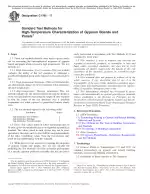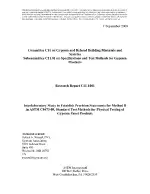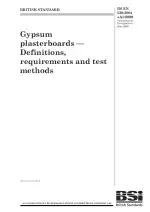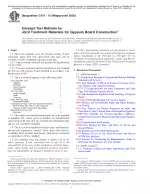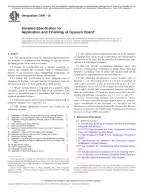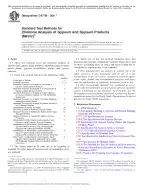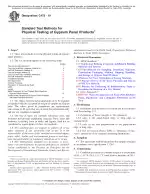ASTM C1795-17 PDF Download
Standard ENStandard Test Methods for High-Temperature Characterization of Gypsum Boards and Panels
Also Known As:
The ASTM C1795-17 standard specifies three test methods for the high-temperature characterization of gypsum boards and panels. These test methods are designed to measure the thermophysical responses of the materials when exposed to elevated temperatures.
The first test method, High-temperature Core Cohesion, evaluates the ability of the test specimen to withstand a specified mechanical strain while exposed to high temperatures. The second test method, High-temperature Shrinkage, assesses the dimensional changes of the test specimen when subjected to elevated temperatures. Lastly, the High-temperature Thermal Insulation test method measures the rate of heat transfer through the thickness of the material by determining the time required to heat the center of the specimen over a specified temperature rise under prescribed furnace conditions.
It is important to note that while these test methods are useful for evaluating the fire properties of gypsum boards and panels, they are not suitable for predicting the fire resistance performance of specific gypsum protected assemblies that have not been previously tested and correlated with the ASTM E119 test methods. This standard provides a means of measuring and describing the response of materials, products, or assemblies to heat and flame under controlled conditions but does not cover all factors required for fire hazard or fire risk assessment of these materials under actual fire conditions.
| Descriptors | thermophysical properties, strain, thermal test, cohesion,Gypsum Boards,Gypsum Panel Products,Adhesion and Cohesion,Shrinkage,Stress and Strain,Thermal Analysis,Thermal and Thermodynamic Properties,Thermal Insulation |
| ICS Codes | 13.220.50 - Fire-resistance of building materials and elements 91.060.10 - Walls. Partitions. Façades |
| Language(s) | English |
| File Size | 307.2 KB |

